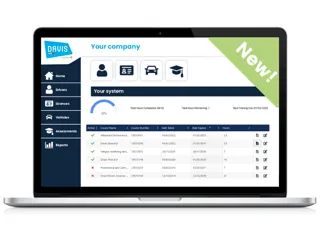The Department for Transport (DfT) has introduced a temporary relaxation of the enforcement of the EU drivers’ hours rules for drivers involved in the delivery of Operation London Bridge.
This relaxation reflects the need for substantial amounts of goods and numbers of personnel to be moved at short notice to support the main official ceremonial events taking place across Great Britain, following the demise of Her Majesty Queen Elizabeth II.
The relaxation of the rules applies from 16:00 on September 9, 2022, until 23:59 on September 22, 2022. It does not apply to drivers in scope of the GB domestic drivers’ hours rules and therefore not subject to tachograph controls.
The retained EU drivers’ hours rules can be temporarily relaxed as follows:
- Replacement of the normally permitted increase to daily driving limits from nine to 10 hours up to twice in a week with one of 11 hours up to twice in a week. Practically, this means that a driver can drive for up to 11 hours on no more than two days in a single week, whilst all other daily driving limits remain at nine hours.
- Replacement of the requirement to take at least two weekly rest periods including one regular weekly rest period of at least 45 hours in a two-week period, with an alternative pattern of weekly rest periods as specified below, and an increase to the fortnightly driving limit from 90 hours to 99 hours.
The alternative pattern of weekly rest periods for drivers using the relaxation related to weekly rest periods is:
- A regular weekly rest period is not required in a two-week period provided two reduced weekly rest periods of at least 24 hours are taken.
- Following this, two regular weekly rest periods must be taken. However, any reduction in weekly rest shall be compensated for in the normal way by an equivalent period of rest taken before the end of the third week following the week in question.
In addition, any rest taken as compensation for a reduced weekly rest period shall be attached to a regular weekly rest period of at least 45 hours (which can be split over two regular weekly rest periods).
THe DfT said the relaxation must not be used in combination with existing rules for international driving, which allow for two consecutive reduced weekly rest periods in certain circumstances. It is not recommended that this relaxation be used for drivers engaged partly in international journeys.
All other drivers’ hours rules remain in force unchanged, including the requirement for drivers to take at a break period of at least 45 minutes after 4.5 hours of driving.
The DfT added: “Driver safety must not be compromised. Operators and self-employed drivers must assess the risks of using the temporary relaxation and implement suitable control measures and/or mitigations, so that the safety of the driver and others is not compromised.
“Transport managers should make sure that a risk assessment has been carried out and appropriate controls put in place. They should also continue to monitor and review where necessary, as long as the relaxation is used.”
Operators must notify the DfT if this relaxation is used. More details can be found here.























Login to comment
Comments
No comments have been made yet.